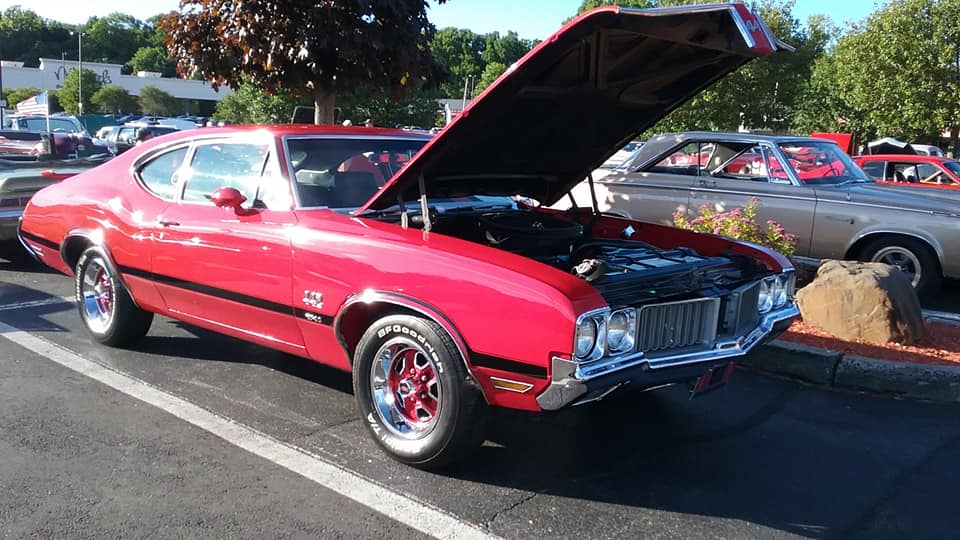Car: Oldsmobile 442 W-30 Coupe
Year: 1970
What makes it special: Oldsmobile’s 4-4-2, also known as the 442 is a muscle car produced by between the 1964 and 1980 model years. Introduced as an option package for F-85 and Cutlass models, it became a model in its own right from 1968 to 1971, spawned the Hurst/Olds in 1968, then reverted to an option through the mid-1970’s. The “4-4-2” name derives from the original car’s 4-barrel carburetor, 4r-speed manual transmission, and dual exhausts. It was originally written “4-4-2” with badging showing hyphens between the numerals and remained hyphenated throughout Oldsmobile’s use of the designation. Beginning in 1965, the 4-4-2’s standard transmission was a 3-speed manual along with optional 2-speed automatic and 4-speed manual, but were still badged as “4-4-2″s. By 1968 badging was shortened to simply “442”, but Oldsmobile brochures and internal documents continued to use the “4-4-2” model designation.
What made it famous: 1970 was the pinnacle of performance from Oldsmobile. In order to keep up in the horsepower arms-race, General Motors dropped the cap on engine size in 1970, and Oldsmobile responded by making the Olds 455 V8 the standard 4-4-2 engine. Output was 365 hp and 500 lb⋅ft, with a 370 hp variant available with the W30 option. Those seeking to experience the ultimate in performance from Lansing could order a “W-Machine” version of the 4-4-2, dubbed the W-30 package. The 4-4-2 W-30 added a fiberglass hood with functional air scoops and low-restriction air cleaner, aluminum intake manifold, special camshaft, cylinder heads, distributor, and carburetor. Rear shoulder seat belts were optional at $23.
Why I would want one: If you want the ultimate 4-4-2, you want the 1970 W-30.
Fun fact: Magazine ads using an offbeat mad scientist trumpeted “Dr. Olds introduces as large a V8 as ever bolted into a special-performance production automobile!”

